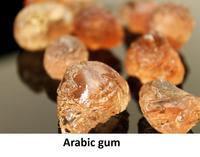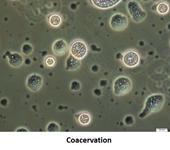Soft Matter Engineering (I2M)
Presentation
Last update: 3 September 2019
The team is interested in the roles of molecular, chemical and thermomechanical effectors on the structuring of naturally assembled, particularly complex biopolymers.
Among its specific study objectives, it seeks to establish the Υ-P-T-Φ state diagrams of biopolymers in relation to their characteristics (chemical composition, architecture, flexibility, hydration) as well as the physico-chemical environment (type of solvent, pH, ionic strength, redox potential, presence of co-solutes).
More precisely, it seeks to identify the singular operation points of the state diagrams, in particular out of thermodynamic equilibrium, corresponding to specific interaction levels (biopolymer-biopolymer, biopolymer-water and biopolymer-co-solutes). This allows to formalize the relationships between the structuring / destructuring mechanisms and the techno-functional properties of assemblies.
Scientific scope
Raw materials
- The I2M team focuses on the study of biopolymers (plant proteins, glycoproteins, PC, PHA).
-
- We characterize these raw materials in terms of composition and structure from molecular to macromolecular scale.
- The destructuration and / or liquid fractionation of biopolymers makes it possible to isolate the fractions of interest that play a determining role in the functionality of products. The analysis of their structure and physicochemical properties sheds light on structure-function relationships.
Processes
- Among the reaction processes handled by the team:
- Maturation / aging of biopolymers and products
- Enzymatic and chemical hydrolysis,
- Aggregation and its mechanistic aspect related to induction variables (temperature, high pressure, shear),
- Associative phenomena (coacervation, aggregation) physicochemically induced,
- Adsorption phenomena at interfaces
- Emphasis is placed on the role of hydration and solvent quality on the reactivity of biopolymers.
Product/properties
- The products range from flavoring media to textured vegetable proteins.
- Their mechanical / textural, emulsifying / foaming properties, their stability, their water and aroma retention capacity, their biodegradability are characterized.
-
Last update: 3 September 2019





